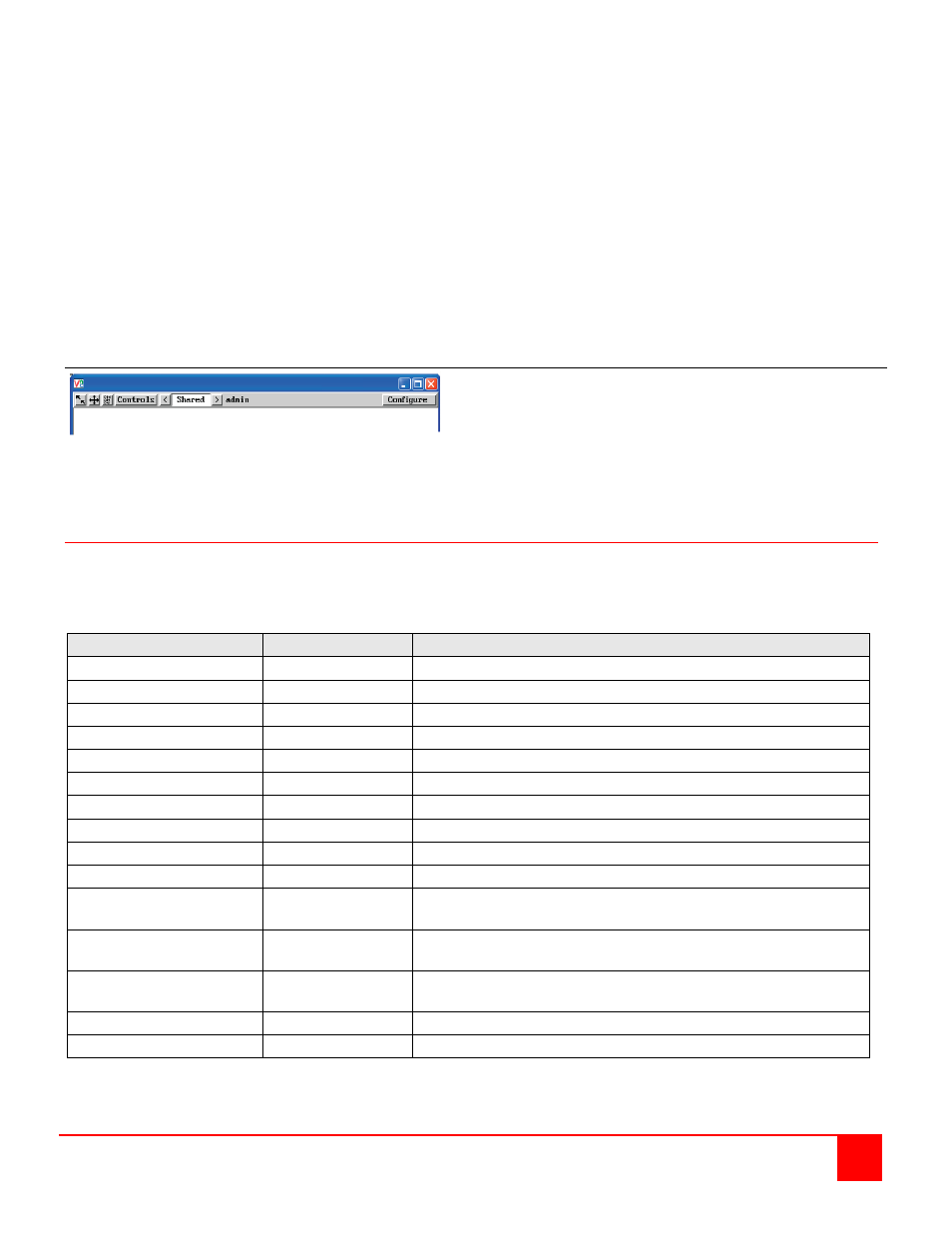Keyboard commands – Rose Electronics UltraMatrix Remote 2 User Manual
Page 43

ULTRAMATRIX REMOTE 2 INSTALLATION AND OPERATIONS MANUAL
37
It is recommended that the Host computer names be the same as the names assigned to each computer when the
configure computer function for the KVM Switch module was performed. To configure the Hosts feature, click on the
“Configure” tab in the upper right corner of the viewer window. This will display the configuration options. Select
“Host” from the option tabs and the Host configuration window will display as shown in Figure 29
1. Select (highlight) the Host slot to configure and the Host Configuration box will display.
2. Enter the name for this position (Example: Computer 6). Enter the user names that will be given access to this
host location. An * allows all users access or a list of users separated by commas (e.g. admin,nigel,andy,steve).
3. Enter the Hotkey / KVM port keyboard command sequence to switch to the CPU port (+-ctrl+-6+enter) for locations
10 or greater like port 15, the command sequence would be +-ctrl+-1+-5+enter).
When all needed host switching commands have been entered. Save the Host Configuration and also save the Host
menu information. Once saved, you will return to the configuration menu. From the Configuration menu, return to the
Host and click on the Hosts button on the viewer toolbar. The defined hosts will display in the dropdown menu. Click
on any Host name and you will be immediately switched to that CPU port. The Host configuration feature can also be
used to send any keyboard command sequence to the KVM switch module. It is recommended that only commands to
switch to a CPU port are used. You can set-up a host location to display the KVM switch module’s OSD menu (+-
Ctrl+-F12+Enter) but it is best to use the “Command, Keyboard” function for these types of commands.
Share Tab
The shared feature allows you to either share the connection with up to 4 simultaneous users or select the private
mode, which inhibits other users from accessing the UltraMatrix Remote 2. In the shared mode, connected users all
see and control the same computer simultaneously. Keyboard and mouse activity is on a first come, first serve basis.
Keyboard commands
Keyboard commands can be issued from a local or any remote workstation. Remote workstations must be using the
VNC viewer (not the Java applet) to issue keyboard commands. To issue a keyboard command, press and release
the left Ctrl key then, within 2 seconds, issue the command.
Command
Key Sequence
Description
Main Menu
[Ctrl] [F12]
Displays main menu
CPU List
[Ctrl] [Esc]
Displays CPU selection list
Direct CPU connect
[Ctrl] n [Enter]
Connects directly to the specific CPU number “n”.
Connect Back
[Ctrl] [Backspace]
Connects to the previous CPU port
Connect Down
[Ctrl] [Minus sign]
Connects to the previous CPU in a Group.
Connect Up
[Ctrl] [Plus sign]
Connects to the next sequential CPU in a group
KVM Status
[Ctrl] D
Displays / Removes status box.
Logout
[Ctrl] L
Logs user out if the KVM station is configured for user logins.
Disconnect
[Ctrl] Q
Disconnects the current CPU
Power On/Off
[Ctrl] Del
Sends power on/off command to a Sun computer
Reset Keyboard/ mouse
[Ctrl] R
Resets / enables keyboard and mouse; enables PS/2 mouse on
connected CPU
Send Null Byte
[Ctrl] N
Sends a null byte to the CPU’s PS/2 mouse port. Use this
command if the PS/2 mouse gets “out of sync”.
Reset Mouse (NT or Unix
systems only)
[Ctrl] O (not zero)
Resets the currently selected NT or Unix computers PS/2 mouse.
Also switches the NT mouse driver to “wheel” mode.
Start Scan
[Ctrl] S
Sequentially steps through all connected CPUs in a group.
Stop Scan
[Ctrl] X
Turns scan “Off”
Table 2. Keyboard Commands
